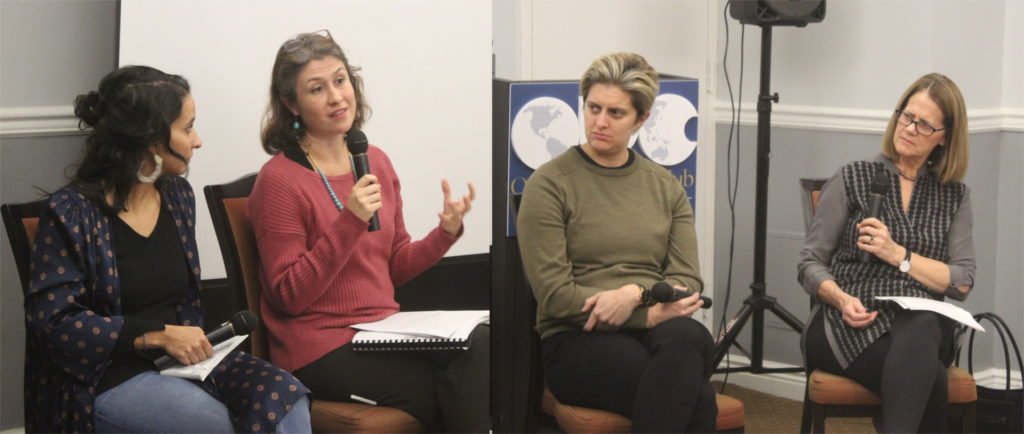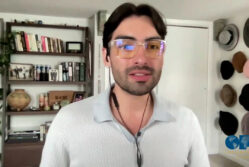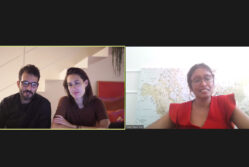Event Coverage Highlight

Experts Discuss Current Risks and Rewards of Video Journalism
By Chad Bouchard
Over the last two decades, newspapers and other traditional print media have been under increasing pressure to provide video and multimedia content. But in today’s era of ubiquitous cell phone cameras, viral distribution, and manipulated content, video storytelling comes with many pitfalls. On Oct. 18, a panel of experts gathered for a panel to present a “Video 101” seminar on perils and best practices of using video footage.
“Video is an essential part of storytelling, and of any news organization’s content mix,” said OPC Secretary Paula Dwyer of Bloomberg News, who moderated the panel. But she added that print journalists who are expected to shoot video now have to learn new skills because “the technology differs, the way you tell the story is different, ethics involved are different, the framing of the story is different.”
One panelist was Priscila Neri, the senior program manager for Witness. Her group trains people around the world on how to use video and technology to document human rights violations, with a focus on using footage ethically and thoughtfully without re-victimizing people who are involved in the videos.
She said despite the risks, video has empowered citizens around the world to challenge oppression, impunity and inequality.
“We’re going to have to do some work on media literacy, and on making sense of volume, and sorting what’s real and what’s not, but for me in the end, when I think about our partners who are defying odds to tell that stories that we haven’t heard through that perspective, that’s something that can only be good in the long run.”
She said in many cases Witness advises people with sensitive video footage to refrain from posting it publicly at all, or to delay and use it more strategically. In one case, someone who witnessed police violence waited for the official story to come out, and then his video exposed lies in the police version of events. If he’d posted it first, police might have adjusted their account to sidestep the allegations, she said.
Witness and the Guardian Project co-created a tool called ProofMode, which adds metadata to photos and video to help prevent activists and journalists from having their work discredited as fakes.
Erica Anderson, lead for U.S. partnerships with News Lab at Google, is working with journalists and organizations like Witness to teach digital strategies including how to use metadata and other information to verify content.
“I’m a former journalist. This is really about applying [journalists’] questions. ‘Is this real? Can I trust it?’ – and using the digital footprint to understand” the sources, she said.
She noted that journalists have used tools like Google Street View for image forensics, such as in an investigation on the website Bellingcat that verified the location of a photo of the missile launcher in Russia that took down Malaysian Airlines Flight 17.
The panelists said that journalists can use a range of information to verify media, like historical weather data, terrain details and hits on Google Reverse Image Search.
Sara Obeidat, a co-producer at Rain Media working on films for FRONTLINE, said she first got into documentary filmmaking because she came to distrust printed news as a child growing up in Jordan. Video offers the opportunity to “show, not tell” details about a story that are resonant and true, she said.
She recounted an example, where she was filming a story about Syrian refugees in Jordan, and was able to capture disruption in the community as aid workers delivered water in trucks to only particular households, which fueled tensions.
“I just remember telling my colleague ‘just get your phone out, let’s start filming this, it can translate what we were trying to report on without having to editorialize.’”
“It’s basically just thinking about how to have as much unfold in front of you as possible, and not to get ahead of yourself and tell people what they’re about to see, but just letting them see it. Usually that means looking for characters who are doing something, and looking for events that can explain that, and listening really well.”
Click the window below to watch a playlist of clips from the program.



